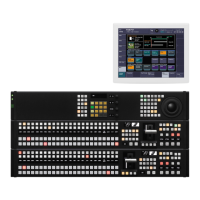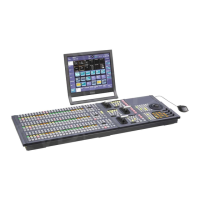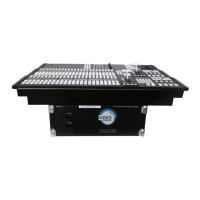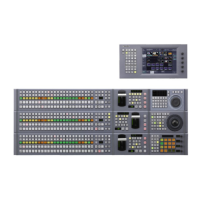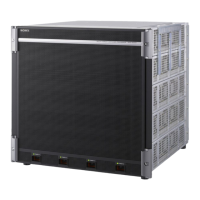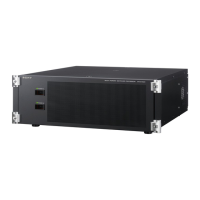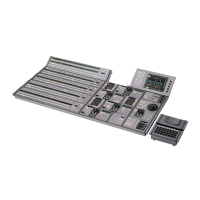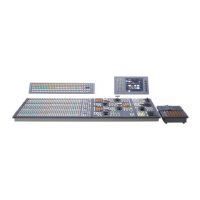Macro File Editing Rules 423
Macro File Editing Rules
When editing a macro file, follow the rules described
below.
Macro File Syntax
The macro file syntax is as follows.
File format
The file is in CSV (comma-separated value) format.
Newline code
CR (ASCII code 0D), LF (ASCII code 0A), or CRLF may
be used.
Statement syntax
There are four types of statement, each terminated by a
newline code.
File header: This must always appear as the first line of
the file. It comprises 28 characters, as follows.
Example: PNL (space) 0001PNL_rrrr.PMRnnnnnnnn
rrrr: Macro register number (0001 to 0099)
nnnnnnnn: In a file created on the switcher, this is a
register name automatically set by the switcher.
When creating a new file, it is recommended to set this
to be the same as the file name
(
1
p. 424).
The name is limited to eight characters.
The following characters may not be used.
space, \, /, :, ;, , (comma), . (dot), <, >, *, ?, ", |
Comment: Begins with “#”. The content of the line
following the “#” up to the next newline has no effect
on macro execution, and can be used as a comment.
Notes
You can only use comments in files saved to a local
disk or removable disk. When you load a macro file
into a register, the comments are discarded.
Event statement: Begins with “Event?,” and defines the
macro event
(
1
“Syntax of Event and Continue
Statements” (p. 423)).
Continue statement: Begins with “Continue?,” and
defines the macro event
(
1
“Syntax of Event and
Continue Statements” (p. 423)).
Some events cannot be used
(
1
“Correspondence
between Events and Symbols” (p. 424)).
Syntax of Event and Continue
Statements
An event can be written with an Event statement only, or
with an Event statement followed by any number of
Continue statements. The Event statements and Continue
statements have the following syntax.
Word separator character
Use “,” (comma).
Ignored
Spaces and tabs are ignored. There is no distinction
between lowercase and uppercase. If two or more
separator characters appear consecutively, later ones are
ignored. Separator characters at the beginning of a line are
also ignored.
Content of line
Must begin with “Event?” or “Continue?,” followed by
symbols and parameters.
Event?,[symbol], [parameter], [parameter], …
Continue?,[symbol], [parameter], [parameter], …
symbol:
ASCII character string showing the type of event
(
1
“Correspondence between Events and Symbols”
(p. 424)).
parameter: Shows details of an event. Consists of
parameter names and arguments, and these must
appear in pairs. The number and type of parameters
depends on the event
(
1
“Symbols and Parameters”
(p. 425)).
If the same parameter appears twice or more, the last
occurrence is valid.
How to use Continue statements
When a single parameter has more than one argument, use
a Continue statement. The following example is of a
snapshot event.
An event to recall a snapshot in region M/E-1 is written as:
Event?,Snapshot,Region?,ME1,Register?,1,Attribute
?,Off,Time?,Current
In the Event statement, only one region can be specified.
To specify regions M/E-1 and PGM/PST, use a Continue
statement, thus:
Event?,Snapshot,Region?,ME1,Register?,1,Attribute
?,Off,Time?,Current
Continue?,Snapshot,Region?,PP,Register?,1,Attribut
e?,Off,Time?,Current
To specify more than one argument for a region parameter,
follow the Event statement by a Continue statement on the
next line.

